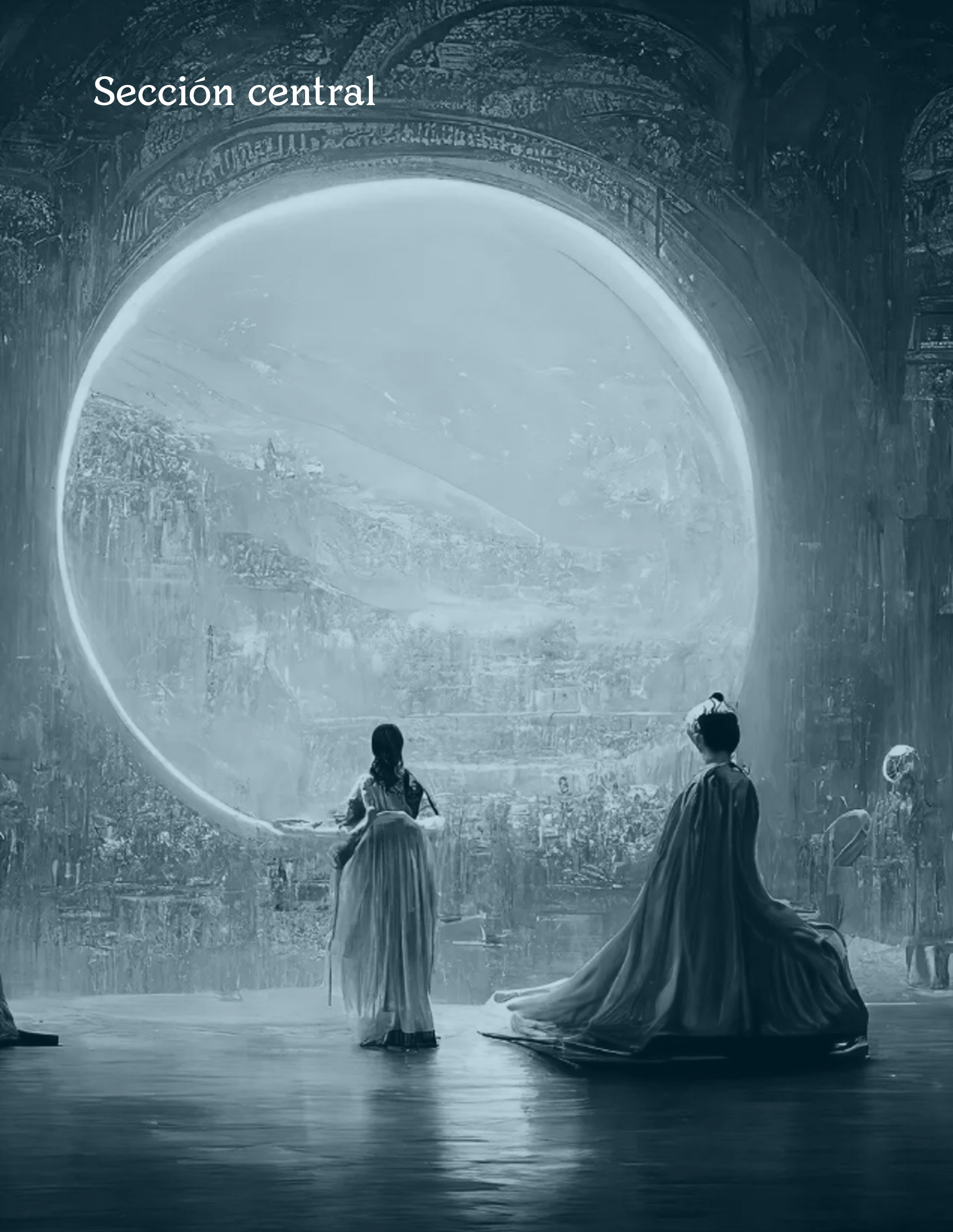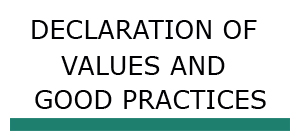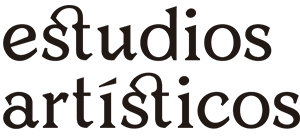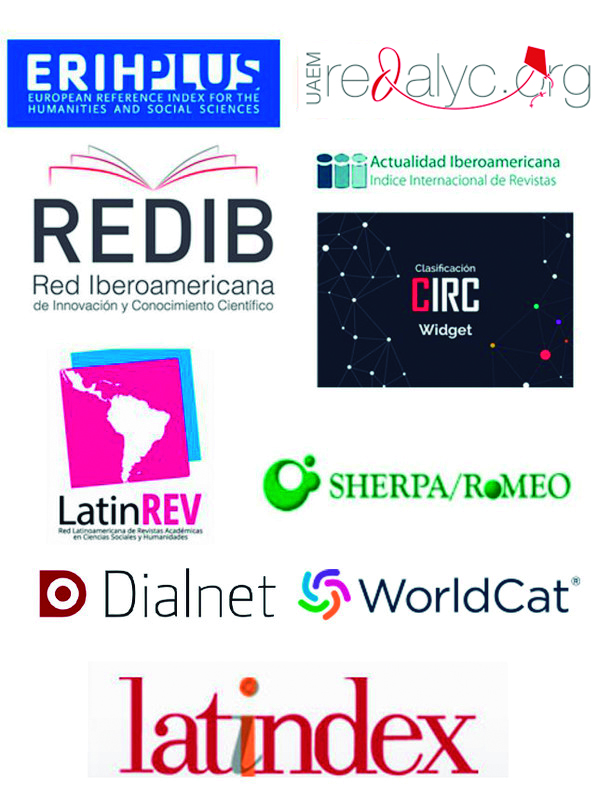
DOI:
https://doi.org/10.14483/25009311.21833Publicado:
2024-03-27Número:
Vol. 10 Núm. 16 (2024): Enero-Junio 2024Sección:
ArtículosUnveiling the Creation of AI-Generated Artworks: Broadening Worringerian Abstraction and Empathy Beyond Contemplation
Revelando a Criação de Obras de Arte Geradas por IA: Expandindo a Abstração e a Empatia Worringeriana Além da Contemplação
Palabras clave:
abstracción, empatía, arte, creación, inteligencia artificial, Worringer (es).Palabras clave:
Abstraction, empathie, art, creation, artificial intelligence, Worringer (en).Palabras clave:
abstração, empatia, arte, criação, inteligência artificial, Worringer (pt).Descargas
Resumen (es)
En su obra pionera, Abstracción y empatía, Wilhelm Worringer profundizó en las complejidades de algunas obras de arte abstracto y figurativo, afirmando que evocan distintos impulsos en el público, específicamente, los impulsos hacia la abstracción y la empatía. Este artículo afirma la presencia de evidencia empírica que apoya la extensión de los conceptos de Worringer más allá del ámbito de la apreciación del arte al dominio de la creación artística.
En consecuencia, se postula que la abstracción y la empatía sirven como principios fundamentales que guían la producción tanto del arte abstracto como del figurativo.
Esto tiene una importancia particular en el siglo XXI, donde la inteligencia artificial (IA) asume un papel creativo que estaba ausente en la formulación inicial de la teoría de Worringer. Por lo tanto, este artículo postula que la IA alberga inherentemente una predisposición para la generación de arte abstracto, debido a sus orígenes y funcionamiento no vivos e inorgánicos.
Resumen (en)
In his groundbreaking work, Abstraction and Empathy, Wilhelm Worringer delved into the intricacies of various abstract and figurative artworks, contending that they evoke distinct impulses in the human audience—specifically, the urges towards abstraction and empathy. This article asserts the presence of empirical evidence supporting the extension of Worringer’s concepts beyond the realm of art appreciation to the domain of art-making. Consequently, it posits that abstraction and empathy serve as foundational principles guiding the production of both abstract and figurative art. This holds particular significance in the 21st century, where artificial intelligence (AI) assumes a creative role that was absent during Worringer’s initial formulation of his theory. Thus, this paper postulates that AI inherently harbors a predisposition for the generation of abstract art, owing to its non-living and inorganic origins and functioning.
Resumen (pt)
Em seu trabalho pioneiro, Abstração e Empatia, Wilhelm Worringer mergulhou nas complexidades de algumas obras de arte abstratas e figurativas, afirmando que elas evocam impulsos distintos no público, especificamente, impulsos em direção à abstração e à empatia. Este artigo afirma a presença de evidências empíricas que sustentam a extensão dos conceitos de Worringer para além
do âmbito da apreciação artística para o domínio da criação artística. Consequentemente, postula se que a abstração e a empatia servem como princípios fundamentais que orientam a produção tanto da arte abstrata quanto da figurativa. Isso é de particular importância no século 21, onde a inteligência artificial (IA) assume um papel criativo que estava ausente na formulação inicial da teoria de Worringer. Portanto, este artigo postula que a IA abriga inerentemente uma predisposição para a geração de arte abstrata, devido às suas origens e funcionamento não vivos e inorgânicos.
Referencias
Arriagada, L. (2021). Artistas mecánicos: Una mirada a la capacidad estética de máquinas y algoritmos desde la música pop y el pop art [Mechanical Artists: A Look at The Aesthetic Capability of Machines and Algorithms from Pop Music and Pop Art]. Calle 14 revista de investigación en el campo del arte, 16(29), 54–66. https://doi.org/10.14483/21450706.17401
Arriagada, L. (2023). CG-art: An aesthetic discussion of the relationship between artistic creativity and computation [University of Groningen]. https://doi.org/10.33612/diss.693764937
Bruno, G. (2014). Surface: Matters of Aesthetics. The University of Chicago Press.
Cacioppo, J. T., Petty, R. E., Losch, M. E., & Kim, H. S. (1986). Electromyographic activity over facial muscle regions can differentiate the valence and intensity of affective reactions. Journal of Personality and Social Psychology, 50(2), 260–268. https://doi.org/10.1037/0022-3514.50.2.260
Chamberlain, R., Mullin, C., Scheerlinck, B., & Wagemans, J. (2018). Putting the art in artificial: Aesthetic responses to computer-generated art. Psychology of Aesthetics, Creativity, and the Arts, 12(2), 177–192.
https://doi.org/10.1037/aca0000136 de Vries, K. (2020). You never fake alone. Creative AI in action. Information, Communication & Society, 23(14), 2110–2127. https://doi.org/10.1080/1369118X.2020.1754877
Dickie, G. (1969). Defining Art. American Philosophical Quarterly, 6(3), 253–256. JSTOR. Doherty, R. W. (1997). The Emotional Contagion Scale: A Measure of Individual Differences. Journal of Nonverbal Behavior, 21(2), 131–154. https://doi.org/10.1023/A:1024956003661
Dubal, S., Lerebours, A.-E., Taffou, M., Pelletier, J., Escande, Y., & Knoblauch, K. (2014). A Psychophysical Exploration of the Perception of Emotion from Abstract Art. Empirical Studies of the Arts, 32(1), 27–41. https://doi.org/10.2190/EM.32.1.EOV.4
Eisner, L. H. (1952). L’écran démoniaque: Influence de Max Reinhardt et de l’expressionnisme [The Haunted Screen Expressionism in the German Cinema and the Influence of Max Reinhardt]. Bonne.
Eisner, L. H. (2009). The haunted screen: Expressionism in the German cinema and the influence of Max Reinhardt (2. paperback ed., [Repr.]). Univ. of California Press. Elgammal, A., Liu, B., Elhoseiny, M., & Mazzone, M. (2017). CAN: Creative Adversarial Networks, Generating “Art” by Learning About Styles and Deviating from Style Norms. arXiv:1706.07068 [Cs]. http://arxiv.org/abs/1706.07068
Esrock, E. J. (2018). Einfühlung as the breath of art: Six modes of embodiment. Cognitive Processing, 19(2), 187–199. https://doi.org/10.1007/s10339-017-0835-4
Folgieri, R., Lucchiari, C., Granato, M., & Grechi, D. (2014). Brain, Technology and Creativity. Unveiling the Creation of AI-Generated Artworks: Broadening Worringerian Abstraction and Empathy / Leonardo Arriagada 157 BrainArt: A BCI-Based Entertainment Tool to Enact Creativity and Create Drawing from Cerebral Rhythms. In N. Lee (Ed.), Digital Da Vinci (pp. 65–97). Springer New York. http://link.springer. com/10.1007/978-1-4939-0965-0_4
Freedberg, D., & Gallese, V. (2007). Motion, emotion and empathy in esthetic experience. Trends in Cognitive Sciences, 11(5), 197–203. https://doi.org/10.1016/j.tics.2007.02.003
Gallese, V. (2001). The “Shared Manifold” Hypothesis: From Mirror Neurons to Empathy. Journal of Consciousness Studies, 8(5–7), 33–50. Ganczarek, J., Hünefeldt, T., & Olivetti Belardinelli, M. (2018). From “Einfühlung” to empathy: Exploring the relationship between aesthetic and interpersonal experience. Cognitive Processing, 19(2), 141–145. https://doi.org/10.1007/s10339-018-0861-x
Gangadharbatla, H. (2022). The Role of AI Attribution Knowledge in the Evaluation of Artwork. Empirical Studies of the Arts, 40(2), 125–142. https://doi.org/10.1177/0276237421994697
Gao, H. -l, & Zheng, B. -z. (2019). Human-Machine Integration: A Philosophical Analysis Based on McLuhan Media Theory and Traditional Chinese Culture. 21st Century Ethics Research, 36–49. https://doi.org/10.24546/81011206
Gelernter, D. (2009, February). The Gothic Vision. American Enterprise Institute - AEI. https://www.aei.org/articles/the-gothic-vision/
German, K., Limm, M., Wölfel, M., & Helmerdig, S. (2019). Towards Artificial Intelligence Serving as an Inspiring Co-Creation Partner. EAI Endorsed Transactions on Creative Technologies, 6(19), 1–11. https://doi.org/10.4108/eai.2642019.162609
Gernot, G., Pelowski, M., & Leder, H. (2018). Empathy, Einfühlung, and aesthetic experience: The effect of emotion contagion on appreciation of representational and abstract art using fEMG and SCR. Cognitive Processing, 19(2), 147–165. https://doi.org/10.1007/s10339-017-0800-2
Hill, L. (2022). Jung’s Reception of Picasso and Abstract Art (1st ed.). Routledge. https://www.taylorfrancis.com/books/9781003222729
Lang, P. J., Greenwald, M. K., Bradley, M. M., & Hamm, A. O. (1993). Looking at pictures: Affective, facial, visceral, and behavioral reactions. Psychophysiology, 30(3), 261–273. https://doi.org/10.1111/j.1469-8986.1993.tb03352.x
Lanzoni, S. (2009). Practicing psychology in the art gallery: Vernon Lee’s aesthetics of empathy. Journal of the History of the Behavioral Sciences, 45(4), 330–354. https://doi.org/10.1002/jhbs.20395
Lanzoni, S. (2012). Empathy in Translation: Movement and Image in the Psychological Laboratory. Science in Context, 25(3), 301–327. https://doi.org/10.1017/S0269889712000154
Lipps, T. (1903). Ästhetik: Psychologie des Schönen und der Kunst [Aesthetics: Psychology of Beauty and Art]. Voss. Mäki-Reinikka, K. (2018, May 1). Cave Paintings for the AI: Art in the Age of Singularity. Politics of the Machines - Art and After. https://doi.org/10.14236/ ewic/EVAC18.13
McLuhan, M. (1994). Understanding media: The extensions of man (1st MIT Press ed). MIT Press. Mikalonytė, E. S., & Kneer, M. (2021). Can Artificial Intelligence Make Art? (SSRN Scholarly Paper ID 3827314). Social Science Research Network. https:// papers.ssrn.com/abstract=3827314
Mordvintsev, A., Olah, C., & Tyka, M. (2015, June 17). Inceptionism: Going Deeper into Neural Networks. Google AI Blog. http://ai.googleblog.com/2015/06/ inceptionism-going-deeper-into-neural.html
Öhlschläger, C. (2015). Introdución [Introduction]. In Abstracción y naturaleza: Una contribución a la psicología del estilo [Abstraction and empathy: A contribution to the psychology of style] (Kindle ed.). Fondo de Cultura Económica. Persson, I., & Savulescu, J. (2018). The Moral Importance of Reflective Empathy. Neuroethics, 158 Estudios Artísticos: revista de investigación creadora 11(2), 183–193. https://doi.org/10.1007/s12152-017-9350-7
Rabazas, A. (2002). Pequena elucidación sobre o proxectar [A Short Elucidation on Projecting]. Eduga: revista galega do ensino, 36, 113–139.
Read, H. (1948). Art now: An introduction to the theory of modern painting and sculpture (Revised and enlarged ed.-i.e. 3rd ed.). Faber and Faber.
Rekimoto, J. (2019). Homo Cyberneticus: The Era of Human-AI Integration. arXiv:1911.02637 [Cs]. http:// arxiv.org/abs/1911.02637 Titchener, E. B. (1909). Lectures on the experimental psychology of the thought-processes. The Macmillan. Vilchez, J. L., & Michay Valarezo, W. L. (2020). Quantifying the extraction of art meaning: No laterality effect. Neuropsychiatria i Neuropsychologia, 15(3–4), 101–107. https://doi.org/10.5114/nan.2020.101292
Vischer, R., Mallgrave, H. F., & Ikonomou, E. (1994). Empathy, form, and space: Problems in German aesthetics, 1873-1893. Worringer, W. (1907). Abstraktion und Einfühlung: Ein Beitrag zur Stilpsychologie [Abstraction and empathy: A contribution to the psychology of style].
Worringer, W. (1997). Abstraction and empathy: A contribution to the psychology of style (1st Elephant pbk. ed). Ivan R. Dee. Zepke, S. (2005). Art as abstract machine: Ontology and aesthetics in Deleuze and Guattari. Routledge
Cómo citar
APA
ACM
ACS
ABNT
Chicago
Harvard
IEEE
MLA
Turabian
Vancouver
Descargar cita
Licencia
Derechos de autor 2023 Estudios Artísticos

Esta obra está bajo una licencia internacional Creative Commons Atribución-NoComercial-CompartirIgual 4.0.
Licencia actual vigente
Creative Commons BY NC SA - Atribución – No comercial – Compartir igual. Vigente a partir del Vol. 8 Núm. 13 (2022)
https://creativecommons.org/licenses/by-nc-sa/4.0/deed.e
POLÍTICA DE PLAGIO
La Revista ESTUDIOS ARTÍSTICOS expone las directrices sobre buenas prácticas en la publicación científica, como marco para el desarrollo y la implementación de sus propias políticas y sistema de ética en la publicación. Los Editores de la Revista ESTUDIOS ARTÍSTICOS , seleccionan los revisores bajo unas directrices de imparcialidad y profesionalidad, a fin de que se puedan asegurar evaluaciones justas, los Editores garantizan a los autores que se seleccionan a los revisores apropiados para las revisiones de sus trabajos, y los lectores puedan confiar en el proceso de revisión por pares.
Los Editores de ESTUDIOS ARTÍSTICOS son conscientes del trabajo necesario para la toma de decisiones firmes y la creación de procesos editoriales sólidos, diseñados para gestionar sus intereses y fomentar un sistema de publicación eficiente y sostenible, que beneficiará a las instituciones académicas, a los editores de revistas, a los autores, a quienes financian la investigación y a los lectores. Las buenas prácticas en la publicación científica, no se desarrollan espontáneamente sino que se establecen conscientemente y se promueven activamente.
Responsabilidades de los autores de los trabajos
Todos los autores que se reflejan en el trabajo deben haber contribuido activamente en el mismo.
ESTUDIOS ARTÍSTICOS proporciona a los autores unas instrucciones claras donde se explican los conceptos de autoría académica, especificando que las contribuciones deben quedar claras. Los editores de ESTUDIOS ARTÍSTICOS piden la declaración a los autores de que cumplen con los criterios de la revista en relación a la autoría. En caso de darse un conflicto en la autoría de un trabajo publicado, los Editores de ESTUDIOS ARTÍSTICOS se pondrán en contacto con el autor que reclama su autoría para establecer la veracidad del caso. Si los Editores lo estiman oportuno, se cerrará el acceso temporalmente al artículo en cuestión, hasta que se tome una decisión final.
Los documentos a publicar, no deben haber sido publicados antes
ESTUDIOS ARTÍSTICOS considerará sólo aquellos trabajos que no hayan sido publicados antes en otra Editorial y en cualquier formato. En este sentido, se considera que la literatura científica puede ser sesgada por una publicación redundante, con consecuencias importantes. ESTUDIOS ARTÍSTICOS pide a los autores que una declaración de que la obra presentada, sobre todo en su comunicación esencial, no ha sido publicada antes, y no está siendo considerada para su publicación en otros envíos
Los Editores de ESTUDIOS ARTÍSTICOS tienen derecho a exigir un trabajo original y cuestionar los autores acerca de si los artículos de opinión (por ejemplo, editoriales, cartas, revisiones no sistemáticas) han sido publicados antes.
Promover la integridad de la investigación
La mala conducta de Investigación
Si los Editores de ESTUDIOS ARTÍSTICOS sospechan de una mala conducta en la investigación llevada a cabo en un trabajo (por ejemplo, la generación de datos, falsificación o plagio), consultarán a los autores del trabajo sobre el procedimiento desarrollado para la investigación y estos deberán proporcionar cuanta información se les solicite.
La revisión por pares a veces puede detectar indicios de mala conducta en la investigación, en estos casos, los revisores plantearán sus dudas y de ser confirmadas, se considerarán como una falta grave (por ejemplo, la fabricación de datos, la falsificación, la manipulación de imágenes inapropiadas o plagio). No obstante, en todo caso los autores tienen derecho a responder a esas denuncias y demostrar que las investigaciones se han llevado a cabo con diligencia y con la velocidad adecuada.
La protección de los derechos de los participantes / sujetos de investigación
Los Editores de ESTUDIOS ARTÍSTICOS trabajan para crear políticas de publicación que promuevan prácticas éticas y responsables de investigación. Se buscarán garantías de que los estudios han sido aprobados por los organismos pertinentes. Si en la investigación se ha trabajado con datos de personas, los trabajos resultantes, deben ir acompañados de una declaración de consentimiento por parte de las mismas. Los Editores se reservan el derecho a rechazar el trabajo si hay dudas acerca de si se han seguido los procedimientos adecuados.
El respeto de las culturas y el patrimonio
Los Editores de ESTUDIOS ARTÍSTICOS expresan su sensibilidad a la hora de publicar imágenes de objetos que podrían tener un significado cultural o ser causa de delito.
Informar a los lectores acerca de la investigación y la publicación de la mala conducta
Los Editores advertirán a los lectores si se han producido violaciones éticas. En estos casos, ESTUDIOS ARTÍSTICOS publicará las oportunas correcciones cuando estos errores puedan afectar a la interpretación de los datos y a la información, cualquiera que sea la causa del error. Del mismo modo, ESTUDIOS ARTÍSTICOS publicará un escrito de rectificación si se ha demostrado que el trabajo puede ser fraudulento, o si los Editores tienen sospechas fundadas de que se ha desarrollado la investigación bajo una mala conducta. En este caso, la revista publicará una corrección como fe de erratas o la rectificación que incluirá las palabras "Fe de erratas" o "Corrección", se publicará en una página numerada y aparecerá en el índice de contenidos de la revista. Esta rectificación permitirá al lector identificar y entender la corrección en el contexto de los errores cometidos, o explicará por qué se corrigió del artículo, o recogerá las preocupaciones del Editor sobre el contenido del artículo. Estará vinculado electrónicamente con la publicación electrónica original.









